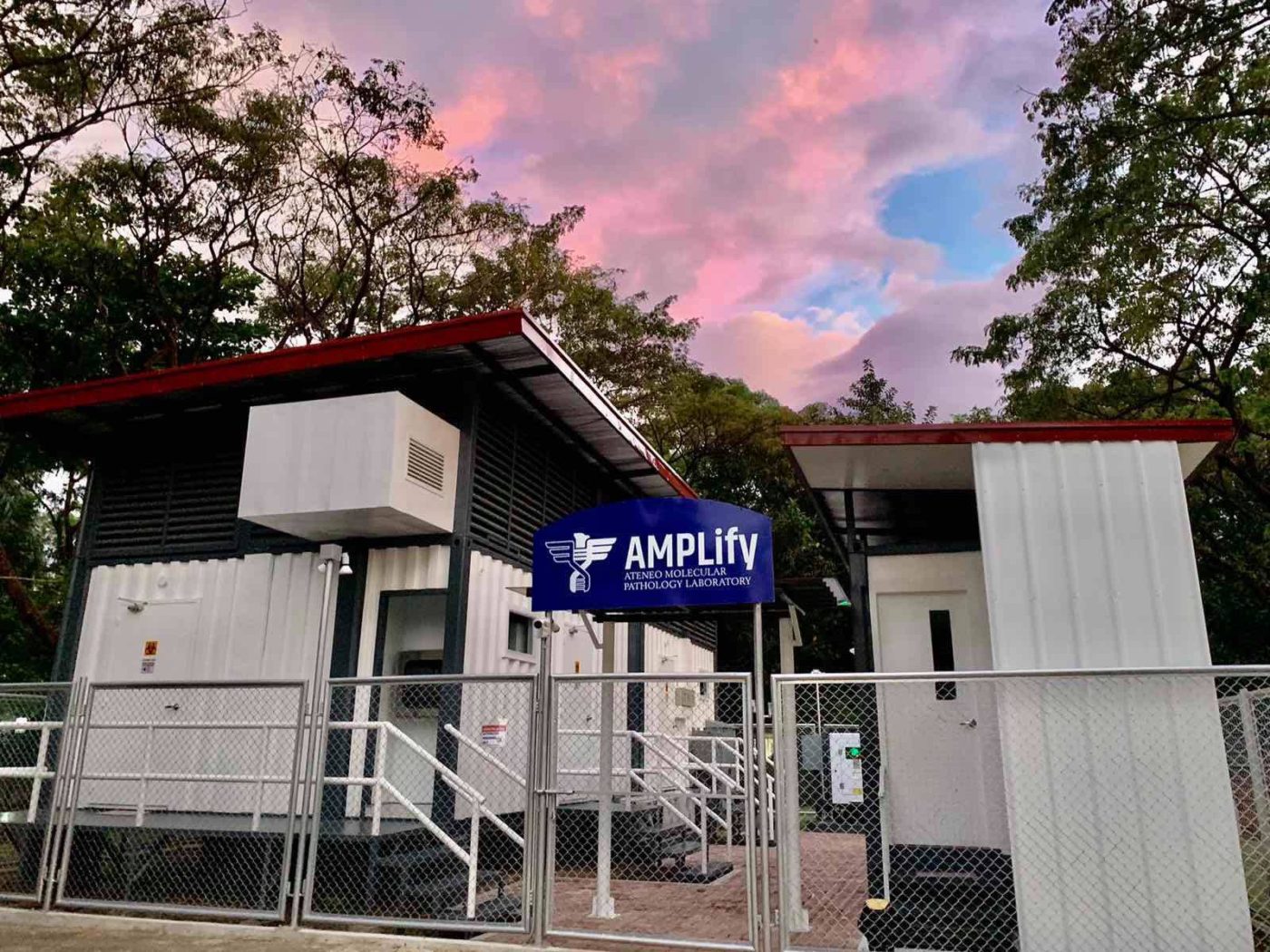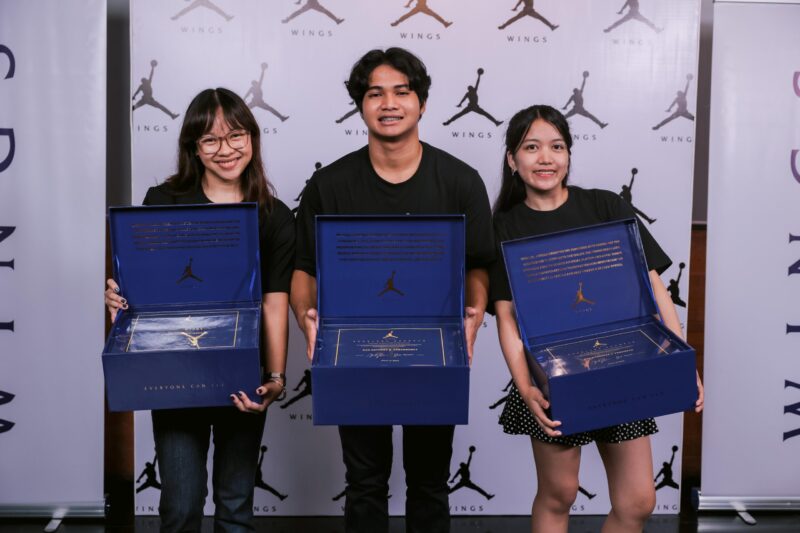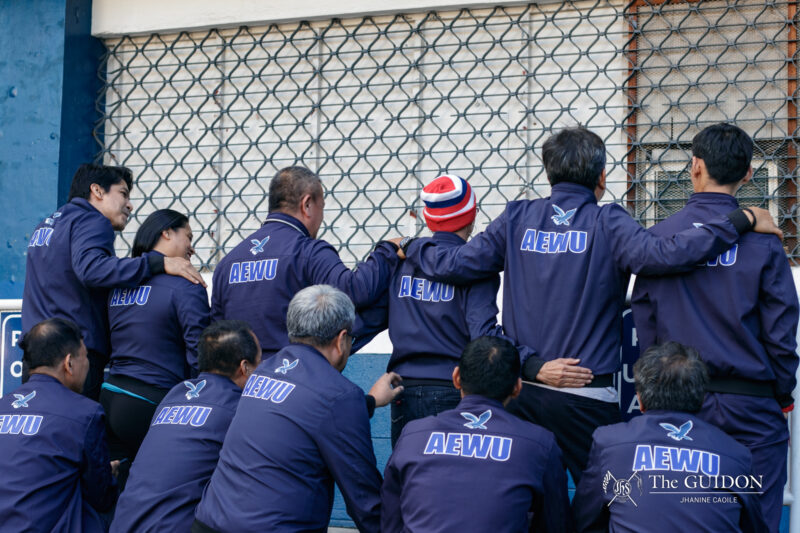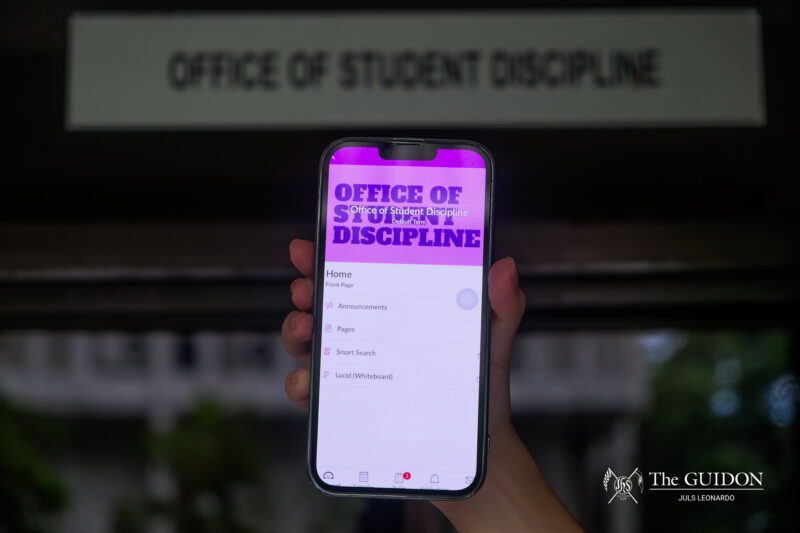IN RESPONSE to the government’s call for more diagnostic facilities, the University founded the Ateneo Molecular Pathology Laboratory (AMPLify) as an on-campus testing facility. It was granted a License To Operate (LTO) by the Department of Health – Health Facilities and Services Regulatory Bureau on March 23 to aid the country’s COVID-19 mass testing efforts.
Initially, University President Roberto Yap, SJ planned to name the facility the Ateneo Molecular Diagnostics and Genetics (AMDG) Laboratory. However, AMPLify Director Gregorio Cortez III explained that the University Marketing and Communications Office (UMCO) did not allow using the AMDG acronym for the facility as it is solely for the Jesuits’ latin motto.
“We have to abide by the directive [of the UMCO] so we had to change it last minute. Supposedly, it was AMPL and we added ‘ify’ to give it a little kick, since the main principle behind the tests that are being done in the laboratory is basically amplification of DNA,” Cortez said.
AMPLify’s purpose
The construction of the laboratory facilities was already underway since June 2020, but the travel restrictions and typhoons limited their manpower and caused a delay in their initial timetable. Because of this, the construction of the laboratory took almost eight months rather than the proposed two to three months.
Since there were only 16 accredited COVID-19 testing centers at that time, Cortez explained that the University wanted to build a facility that would contribute to the controlling and monitoring of the COVID-19 cases.
According to a memorandum released by former School of Science and Engineering Dean Evangeline P. Bautista, PhD, the laboratory aims to be a “venue for the University’s outreach programs to benefit the poor and marginalized sectors of society.”
In line with this, AMPLify Operations Manager Don Ashley Malabana said that they are currently reaching out to the Philippine Health Insurance Corporation to cut down the testing costs to approximately Php 200. Partnerships with foundations and government organizations are also being established to provide testing to the marginalized sector.
Malabana explained that AMPLify is using two nucleic acid extraction machines used for the first step in COVID-19 testing—where each machine can process 93 specimens in 20 minutes. They also have two reverse transcription-polymerase chain reaction (RT-PCR) machines that can each administer 93 specimens in about an hour and a half. As they operate on a single shift, their maximum testing capacity is about 372 samples for every batch.
“The laboratory is designed to be able to accommodate a large number of samples [for testing] so that we don’t get overwhelmed, let’s say for example, [if] there are any surges [in COVID-19 cases]. So we are prepared for that,” Cortez added.
Safety protocols
Currently, AMPLify has a Biosafety Level 2 (BSL-2) containment designed to perform SARS-CoV-2 detection using real-time RT-PCR. As a BSL-2 facility, the laboratory had already been pre-screened to ensure that workers would not spread the virus within the laboratory and outside the Ateneo community. Cortez added that they needed to abide by the standards of biosafety prior to getting an LTO.
“It is an assurance that since we have [an] LTO then the safety issues with regards to having that laboratory are already addressed, because if they are not, we won’t have [an] LTO to begin with,” he said.
Moreover, Cortez elaborated that the process of obtaining the LTO started with the acquisition of equipment and manpower. The laboratory then underwent a multistage process for COVID-19 laboratory assessment, including appropriate training programs for the personnel. After the screening, proficiency testing was conducted to test unknown samples and determine the facility’s capability to acquire the license.
Cortez also said that they wanted to avoid overcrowding on campus, so AMPLify is solely a processing center for samples. This means that they are only catering to the individual swabbing centers as there is no collection facility yet in the Ateneo.
“The swabs will be collected from the [individual collection facilities] outside. They will just be brought by a courier or a messenger to AMPLify, and then the laboratory will process them and perform the PCR testing,” he said emphasizing that this is only the process as of now.
Looking forward
In the Second Town Hall Meeting with the President on May 7, Yap announced that the University will launch a drive-thru and walk-in swabbing center called Blue Swab. Bautista is heading the team in charge of putting up the center, which will serve as a collection facility of specimens.
After swabs are collected from the facility, they will be sent to AMPLify for processing and RT-PCR testing. Cortez said that once the Blue Swab is in place, there will be people visiting the campus instead of being dependent on outside swabbing facilities. However, protocols will still be in place to control foot traffic inside the University.
In the meantime, AMPLify is focused on the daily RT-PCR testing of swabs. Cortez said that while there is currently no molecular-driven research and training being conducted for healthcare professionals, they are still open to the possibility of launching development programs once the COVID-19 pandemic is already in control.Beyond mass testing efforts, Yap also recently announced the University Vaccination Program to provide protection to the Ateneo community and help the government’s aim for population protection in Metro Manila. Full-time, part-time, and temporary employees will be the top priority group as the University awaits the arrival of the 18,000 doses of COVID-19 vaccines they ordered.







